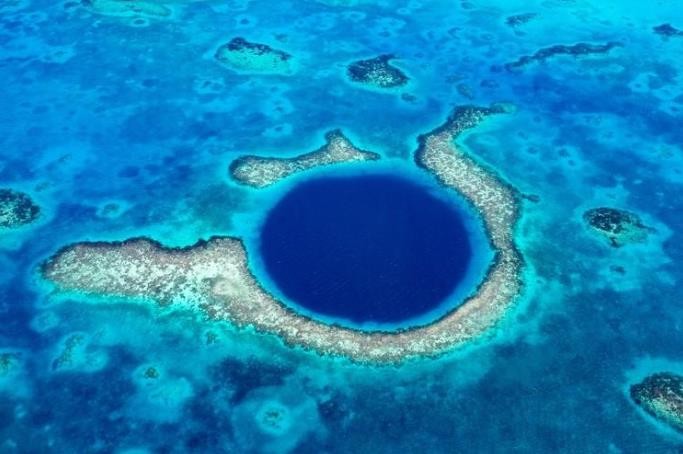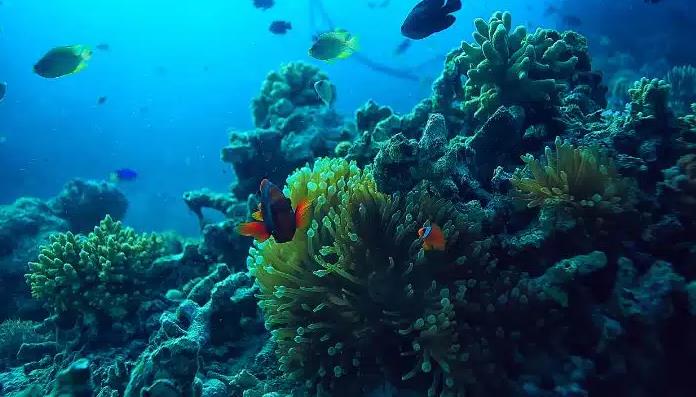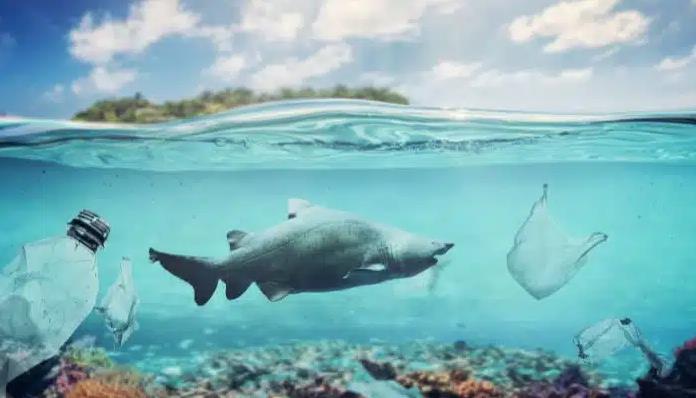潜水员们最终探索了伯利兹大蓝洞的底部,但他们在那里的发现让他们感到敬畏和难以置信。
▲Image for representation purposes only
这片原始的自然奇观至今尚未被人类探索过,到处都是垃圾、尸体和稀有的海洋生物。但这还不是全部。最令人惊讶的发现是一系列神秘的水下洞穴。
大蓝洞是加勒比海伯利兹海岸附近的一个巨大的海洋天坑。它横跨318米,深124米,使其成为该国最具吸引力的景点之一。
海洋中这个美丽而迷人的圆洞自从被发现以来就一直困扰着科学家,但由于缺乏设备,一直没有被探索过。
然而,由亿万富翁理查德·布兰森资助的研究大蓝洞的探险队在2018年达到了顶峰。然而,它在本周作为“人类可怕的证据”在网上疯传。
2018年,Aquatica潜水艇的船员前往蓝洞海底。目标是创建一张天坑内部的三维地图,但他们记录的内容让他们感到震惊,因为这是他们从未预料到的发现。
▲Image for representation purpose only
当他们开始下降时,他们看到了海龟、礁鲨和巨大的彩色珊瑚;然而,当到达90米大关时,生命开始减少。
他们惊讶地发现大西洋海底有一系列神秘的洞穴。埃里卡·伯格曼(Erika Bergman)是探险队的一员,她说,一层厚厚的有毒硫化氢覆盖在天坑上,阻止了氧气进入更深的地方。
她说:“我们发现了落入洞里窒息而死的海螺、海螺壳和寄居蟹。”
该团队还发现了一个深407英尺的2升可乐瓶和一个装满某人度假照片的相机。除了垃圾,他们还发现了两具潜水员的尸体,他们可能是在之前的探险中在大蓝洞迷路的。
▲Image for representation purpose only
伯格曼说:“我们找到了几个人的安息地,我们非常尊重地让伯利兹政府知道我们在***到了他们。所有人都决定不会试图进行任何恢复。那里非常黑暗和宁静;只是让他们留下来。”
他们还发现了钟乳石,它们是悬挂在洞穴顶部的冰柱状构造。它们证明了大蓝洞曾经是一个维持史前生命的干燥洞穴。
根据科学家的说法,它形成于1.4万年前结束的最后一个冰河时期。随着海平面上升,它最终被淹没并坍塌,成为一个天坑。
有研究表明,大蓝洞可能不会永远存在,因为沙子的瀑布会慢慢填满它。
探险队的消息在网上疯传后,社交媒体上的人们反应不同。
一个人写道:“有人想和我一起探索蓝洞吗?哦,等等,人类已经把它毁了。”
“即使是一个人类从未去过的地方也不安全。人们太可怕了。”
布兰森将这次探险描述为“有史以来对气候变化危险最明显的提醒之一”。
他说,气候变化和塑料是可能吞噬海洋的怪物,并强调了废除一次性塑料的必要性。
英文原文
Scientists Make Shocking Discovery Inside The Great Blue Hole Of Belize
Divers finally explored the bottom of the Great Blue Hole in Belize, but what they found there left them awestruck and in great disbelief.
The pristine natural wonder, till now unexplored by humans, was littered with trash, corpses and rare marine creatures. But that is not all. The most surprising find was a series of mysterious underwater holes.
The Great Blue Hole is a huge marine sinkhole in the Caribbean off the Belize Coast. It spans 318 m across and 124 m deep, making it one of the topmost attractions in the country.
The beautiful and intriguing circular hole in the ocean has perplexed scientists ever since it was found but remained unexplored due to a lack of equipment.
However, an expedition to study the Great Blue Hole funded by billionaire Richard Branson culminated in 2018. However, it went viral this week as “proof that humans are terrible.”
The crew from Aquatica Submarine went to the Blue Hole’s bottom in 2018. The goal was to create a 3-dimensional map of the sinkhole’s interior, but what they recorded shocked them, as it was something they had never expected to discover.
As they began their descent, they saw sea turtles, reef sharks and giant colourful corals; however, upon reaching the 90 m mark, life began to diminish.
They were flabbergasted to discover a series of mysterious holes at the bottom of the Atlantic. Erika Bergman, who was a part of the expedition, said a thick layer of toxic hydrogen sulfide stretched across the sinkhole and prevented oxygen from going deeper.
“We found conchs and conch shells and hermit crabs that had fallen into the hole and suffocated,” she said.
The team also found a 2-litre Coke bottle 407 feet deep and a camera full of someone’s holiday pictures. Apart from the trash, they found two corpses of divers who were probably lost in the Great Blue Hole during previous expeditions.
“We found the resting place of a couple of folks, and we very respectfully let the Belize government know where we found them. Everyone decided that we would just not attempt any recovery. It’s very dark and peaceful down there; just kind of let them stay,” Bergman said.
They also found stalactites which are icicle-shaped formations hanging from a cave’s roof. They prove that the Great Blue Hole was once a dry cave that sustained prehistoric life.
Per scientists, it was formed during the last ice age that ended 14,000 years ago. It eventually flooded and collapsed as sea levels rose and became a sinkhole.
There are studies which show that the Great Blue Hole might not be around forever since wate***lls of sand fill it up slowly.
Once the news about the expedition went viral, people on social media reacted differently.
“Anyone wants to explore the Blue Hole with me? Oh wait, humans have already ruined it,” one person wrote.
Even a place that humans had never visited wasn’t safe from our trash. People are terrible,” added another.
Branson described the expedition as “one of the starkest reminders of the danger of climate change had ever seen.”
He said that climate change and plastic are monsters that could eat up the oceans and highlighted the need to do away with single-use plastics.
免责申明:本文根据nypost, fyfeed等内容整理,如有误差,以英文为准;仅代表作者观点,不代表中国海员之家立场。其真实性及原创性未能得到中国海员之家证实,在此感谢原作者的辛苦创作,如转载涉及版权等问题,请作者与我们联系,我们将在第一时间处理,谢谢!联系邮箱:cnisu@54seaman.com




 联系我们人工客服
联系我们人工客服



















 :1391995811
:1391995811


评论 (0人参与)